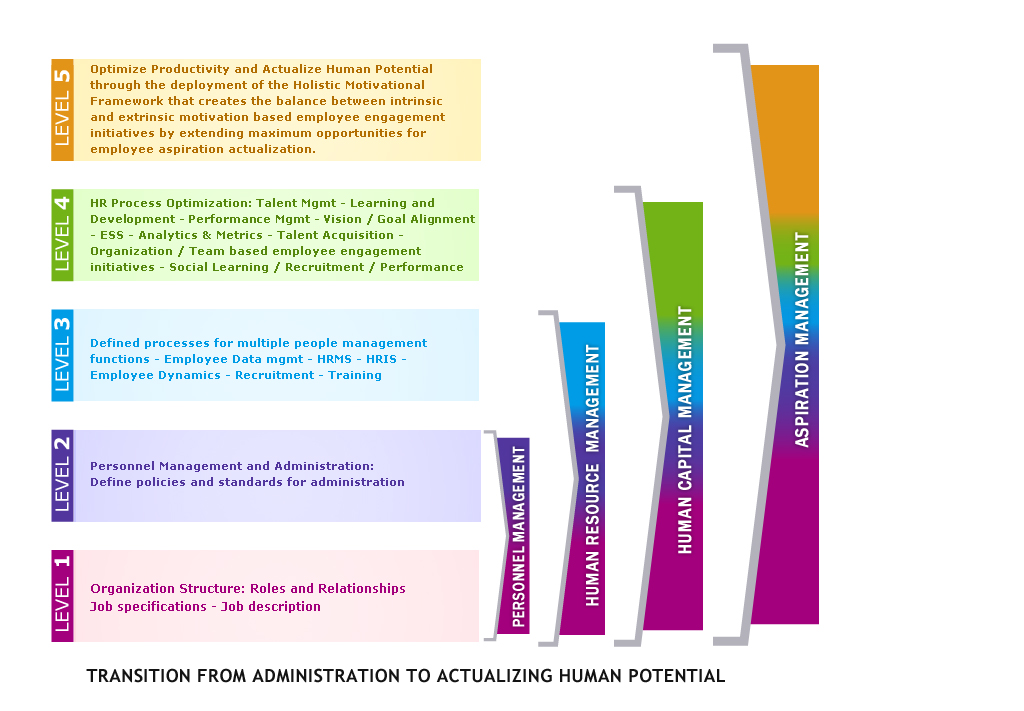
In the business world, where competition is tough and talent is key, more organizations are using data-driven HR practices to boost their talent management strategies. Companies using data analytics in HR are 79% more likely to make better hiring choices. So, it's clear that adding analytics to HR is changing how we attract, keep, and grow top talent. In this article, we’ll look at how data-driven HR can streamline recruitment and improve employee engagement and retention. Whether you're an HR pro wanting to stay ahead or a business leader looking to optimize your team, understanding data's role in HR is essential. Let's explore how analytics can enhance talent management, blending numbers with human potential in interesting ways!
Summary: This article explores data-driven HR practices and how analytics can enhance talent management. It discusses the application of data analytics in optimizing human resources processes.
Data-Driven HR Practices: Enhancing Talent Management with Analytics
Understanding Data-Driven HR Practices
What are Data-Driven HR Practices?
Data-driven HR is all about using data and analytics to make smarter decisions about managing people and improving company performance. It involves moving away from gut feelings and relying on solid data. This shift requires HR professionals to get trained and embrace a culture that values data-backed decisions. Leadership support and clear goals that align with business needs are key.
For example, Merck KGaA used a people analytics platform with over 45 million data points, helping 3,500 users make data-driven choices tied to business outcomes like retaining talent and achieving diversity targets. This illustrates how HR is evolving from a gut-driven role to one that's strategic and evidence-based.
How Analytics is Transforming HR
Analytics has reshaped HR from just handling admin tasks like payroll to playing a strategic role in business decisions. With tools like predictive analytics and natural language processing, HR now digs deeper into workforce dynamics. Companies have transitioned from scattered HR data to unified analytics platforms, allowing managers and HR partners to make quicker, data-backed decisions.
Merck KGaA merged their HR data into one platform, using predictive analytics to spot attrition risks and enhance learning strategies. This shift helps HR predict trends, streamline processes, and contribute more to the company's success.
Role of Analytics in Talent Acquisition
Enhancing Recruitment Quality with Data
Recruitment analytics helps find top talent by analyzing data from resumes, social media, and assessments. This leads to better hires by predicting vacancies and hiring proactively. It ensures the right people are in the right jobs at the right time, saving costs and improving outcomes.
For instance, Providence used HR analytics to predict vacancies and hire proactively, saving $3 million while boosting hiring quality. This demonstrates how data-driven insights can refine the hiring process, attracting candidates more likely to succeed and stay long-term.

Reducing Hiring Costs with Data-Driven Strategies
Data-driven hiring cuts costs by reducing time-to-hire and cost-per-hire through automation and better recruitment channels. Predictive analytics helps decide when to hire or hold off, balancing workforce costs and talent needs. Providence's data strategy allowed leaders to make smart hiring decisions, saving money.
By evaluating recruitment channel effectiveness, HR can allocate resources better, cutting unnecessary spending. This approach streamlines hiring, reducing costs while maintaining or even improving hire quality.
Enhancing Employee Performance and Engagement
Data-Driven Performance Management Strategies
Data-driven HR enables fair performance management by using metrics like output per employee to spot productivity gaps. This reduces bias in evaluations, making them fact-based. Combining performance data with predictive analytics helps identify high-potential employees and plan development.
Merck KGaA linked performance with team size and sales, leading to smarter workforce structuring. Analytics tools allow for continuous performance monitoring, providing real-time feedback to address issues quickly and recognize top performers.

Using Analytics to Boost Employee Engagement
Using data analytics, HR can monitor and boost employee engagement through regular surveys and sentiment analysis. This helps address engagement issues, reducing turnover and improving the employee experience.
For example, eBay uses HR analytics to enhance engagement, retention, and career opportunities. By analyzing data, HR can spot trends affecting engagement and create targeted interventions like personalized development programs and better communication strategies. Data-driven engagement ensures HR efforts match employee needs and organizational goals, fostering a more committed workforce.
Predictive Analytics and Workforce Planning
Predicting Talent Needs with Analytics
Predictive analytics helps forecast talent needs based on data trends, aiding in proactive hiring and development planning. Accurate vacancy predictions align workforce supply with demand, reducing talent shortages and overstaffing.
Providence's accurate vacancy forecasting allowed for proactive hiring, ensuring optimal workforce levels. By examining historical data and workforce trends, HR can anticipate future staffing needs and skill gaps. Predictive models simulate scenarios, preparing companies for market changes and growth. This approach ensures the right talent is ready for future challenges.
Leveraging Advanced Analytics in HR
Advanced techniques like predictive analytics and natural language processing offer deep insights into HR challenges. They identify attrition risks, map skills, and support talent integration during mergers. Merck KGaA used these techniques to enhance retention, learning, and diversity outcomes. These insights help HR anticipate and tackle challenges, optimizing workforce planning and keeping the organization competitive.
Data-Driven Retention Strategies
Using Data to Identify Attrition Risks
Predictive analytics uses metrics like absenteeism and engagement scores to spot employees likely to leave. Early identification allows targeted retention efforts, cutting turnover costs. Merck KGaA flagged first-year attrition risks, enabling proactive retention strategies.
By examining exit interviews and feedback, HR can find out why employees leave and who might leave. This knowledge helps develop retention strategies that address these issues, reducing turnover and keeping valuable talent.
Enhancing Retention with Analytics Insights
Data-driven retention involves analyzing promotion patterns and compensation changes to boost loyalty. Analytics-driven insights support tailored retention programs that tackle workforce challenges and improve satisfaction.
For example, eBay uses insights to adjust promotions and compensation, enhancing career opportunities. By analyzing engagement surveys and compensation data, HR can spot areas for improvement and make changes that enhance the employee experience. Data-driven retention focuses on what matters to employees, leading to higher satisfaction and lower turnover.
Best Practices for Implementing Data-Driven HR
Integrating Analytics into HR Strategy
For successful data-driven HR, align analytics with business goals and KPIs for impact. Leadership support and a culture valuing data-driven decisions are crucial. Companies with executive backing and clear goals, like turnover reduction, see better analytics integration.
HR leaders should ensure analytics align with business goals and inform strategic decisions. This means fostering a data-driven culture where HR relies on evidence, not intuition. Collaborating with IT and finance ensures analytics initiatives have the necessary support.
Building Robust Data Capabilities in HR
Creating a centralized HR data warehouse and using self-service analytics tools democratizes data access, speeding up insights. Training HR to interpret and communicate data is vital to maximizing analytics value.
Merck KGaA gave 3,000 managers access to analytics dashboards, enabling informed decisions and freeing HR for strategic tasks. Organizations must invest in tools and technologies to gather, store, and analyze HR data effectively. This includes robust HR information systems and data visualization tools. HR professionals need skills to interpret and use data insights, possibly through training or hiring data experts. Strong data capabilities and infrastructure ensure HR practices are informed by accurate insights.
FAQ Section
How can predictive analytics improve employee retention?
Predictive analytics enhances retention by revealing factors behind employee turnover. By analyzing job satisfaction, performance, and engagement data, predictive models identify at-risk employees. This lets HR create targeted interventions, like personalized development plans, to meet these employees' needs. Additionally, predictive analytics helps understand turnover causes and develop strategies to reduce risks, improving retention rates.
What are the best practices for integrating HR analytics into talent management?
To integrate HR analytics into talent management, align initiatives with organizational goals to ensure insights contribute to success. HR leaders should promote a data-driven culture and collaborate with other departments. Investing in tools and technologies is key for effective data collection and analysis. HR professionals need skills to interpret data insights and apply them to strategies. Following these practices, organizations can use analytics to enhance talent management and achieve better results.
How does HR analytics help in identifying high-potential employees?
HR analytics identifies high-potential employees by analyzing performance, skills, and behavior data. By examining performance reviews, training rates, and assessments, HR can find employees showing high performance and growth potential. Predictive models assess future role success, helping HR spot employees for leadership or critical roles. Recognizing and nurturing high-potential employees ensures a strong talent pipeline and supports long-term success.
Data-driven HR practices involve using HR data and analytics to guide strategic initiatives, improve recruitment, optimize performance management, boost engagement, and support workforce planning and retention. This approach needs a mindset shift, leadership support, data literacy, and embedding data into daily workflows to make HR a strategic partner for success. HR analytics enhances talent management by optimizing recruitment and onboarding, enabling objective performance management, boosting engagement, and improving retention. People analytics minimizes hiring mistakes, enhances performance management, boosts engagement and retention, supports learning and development, and advances diversity, equity, and inclusion efforts.